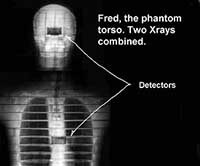

This characteristic offers to the muon telescopes the lowest TheseĬoordinates are inside of the South Atlantic Anomaly (SAA) region, a dip in the Based on theĭata of two directional muon telescopes and located at 22S and 43W. Intensity at ground, due to magnetic anomaly over south Atlantic.
#South atlantic anomaly pdf#
Augusto and 3 other authors Download PDF Abstract: The goal of this study is to examine the response and changes of the muon However, one thing is certain: magnetic field observations from Swarm are providing exciting new insights into the scarcely understood processes of Earth’s interior.Download a PDF of the paper titled Effects of the South Atlantic Anomaly on the muon flux at sea level, by C. The mystery of the origin of the South Atlantic Anomaly has yet to be solved.

However, satellites and other spacecraft flying through the area are more likely to experience technical malfunctions as the magnetic field is weaker in this region, so charged particles can penetrate the altitudes of low-Earth orbit satellites. Such events have occurred many times throughout the planet’s history and even though we are long overdue by the average rate at which these reversals take place (roughly every 250 000 years), the intensity dip in the South Atlantic occurring now is well within what is considered normal levels of fluctuations.Īt surface level, the South Atlantic Anomaly presents no cause for alarm. It has been speculated whether the current weakening of the field is a sign that Earth is heading for an eminent pole reversal – in which the north and south magnetic poles switch places. The challenge now is to understand the processes in Earth’s core driving these changes.”

We are very lucky to have the Swarm satellites in orbit to investigate the development of the South Atlantic Anomaly. Jürgen Matzka, from the German Research Centre for Geosciences, says, “The new, eastern minimum of the South Atlantic Anomaly has appeared over the last decade and in recent years is developing vigorously. Swarm satellites are designed to identify and precisely measure the different magnetic signals that make up Earth’s magnetic field. Scientists from the Swarm Data, Innovation and Science Cluster (DISC) are using data from ESA’s Swarm satellite constellation to better understand this anomaly.
Simple dipolar models are unable to account for the recent development of the second minimum. However, the growth of the South Atlantic Anomaly indicates that the processes involved in generating the field are far more complex. Over the past five years, a second centre of minimum intensity has emerged southwest of Africa – indicating that the South Atlantic Anomaly could split up into two separate cells.Įarth’s magnetic field is often visualised as a powerful dipolar bar magnet at the centre of the planet, tilted at around 11° to the axis of rotation. From 1970 to 2020, the minimum field strength in this area has dropped from around 24 000 nanoteslas to 22 000, while at the same time the area of the anomaly has grown and moved westward at a pace of around 20 km per year.


 0 kommentar(er)
0 kommentar(er)
